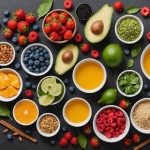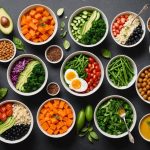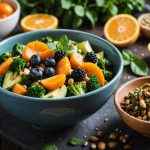Understanding Hydration Needs for Seniors
Ensuring optimal hydration needs for seniors is crucial, especially during outdoor activities. As individuals age, maintaining adequate hydration becomes more challenging due to various physiological changes. The body’s ability to conserve water diminishes, and the sensation of thirst might decrease, leading to unintentional dehydration. Given these age-related hydration issues, those who engage in outdoor activities need to be particularly cautious.
Factors Influencing Hydration
Several factors influence hydration needs in older adults. First and foremost, physical changes with age can significantly impact fluid balance. For instance, kidney function may decline, reducing the organ’s efficiency in conserving water. Additionally, certain medications common among seniors, such as diuretics, can increase fluid loss and exacerbate dehydration risks. Environmental conditions, like heat and humidity during outdoor activity hydration, also demand heightened vigilance.
Also read : Unlocking the Benefits of Group Therapy for Seniors Living with Dementia
Moreover, seniors should monitor fluid intake before, during, and after exercise to prevent dehydration. Adapting these habits and staying aware of their body’s demands helps mitigate hydration challenges. With preventative measures, seniors can continue to enjoy outdoor activities safely and comfortably.
It’s important for seniors, caregivers, and family members to collaborate in understanding and addressing these hydration needs, keeping health and well-being at the forefront.
Also to see : Top Brain-Boosting Games and Puzzles: Essential Tips for Seniors to Stay Mentally Sharp
Recommended Fluids and Hydration Options
Understanding which fluids are best for hydration is crucial, especially for seniors who might have specific needs. It’s important to look beyond just water when considering the best fluids for hydration. For seniors, hydration options that include a balance of water and electrolytes can be beneficial. Electrolyte-rich beverages are vital because they help to maintain bodily fluids balance, which is particularly essential for older adults who may not drink enough plain water due to reduced thirst perception.
Electrolytes, such as sodium and potassium, play a key role in helping the body retain fluids and maintain cellular function. Including drinks like coconut water, which is naturally rich in electrolytes, can be a great choice. Moreover, seniors should consider fluids like herbal teas and low-sugar sports drinks as they not only replenish lost fluids but also provide a routine refreshment without caffeine which is often present in traditional teas and coffees.
Apart from drinks, incorporating hydrating foods, such as fruits and vegetables like cucumbers and melons, is highly beneficial. These foods contribute to fluid recommendations by adding water content to the diet while providing essential nutrients. Keeping hydration diverse ensures that seniors stay properly hydrated and maintain overall health.
Timing and Frequency of Hydration Breaks
Establishing a consistent hydration schedule is essential for maintaining well-being, particularly during outdoor activities. Ensuring the proper timing and frequency of hydration breaks can make a substantial difference in energy levels and overall health.
Guidelines for Hydration Breaks
To optimize performance and comfort, regular hydration breaks should be scheduled. As a general guideline, aim to hydrate every 15 to 20 minutes during activity. This supports a steady intake of fluids, preventing dehydration before it begins.
Monitoring Hydration Frequency
Monitoring the frequency of hydration involves paying attention to bodily signals. If you ever feel thirsty, it’s often a sign you’ve waited too long to hydrate. Other indicators such as a dry mouth or fatigue should prompt you to take a break and drink water.
Adjusting Hydration Based on Activity Level
Recognizing when to adjust your hydration frequency is crucial. Higher activity levels or outdoor conditions like heat necessitate more frequent breaks. For example, during intense exercise or in high temperatures, increase your water intake to every 10 to 15 minutes. This helps in maintaining energy and preventing heat-related ailments.
Recognizing Signs of Dehydration
Dehydration can be a serious concern, particularly for the elderly. It’s crucial to recognize the signs of dehydration to maintain optimal health. Some common dehydration symptoms include dry mouth, decreased urine output, and darker-colored urine. Seniors might also experience dizziness, confusion, or even fainting. These symptoms indicate that the body is lacking sufficient fluids, which can ultimately affect critical bodily functions.
Understanding the consequences of dehydration is equally important. Chronic dehydration may lead to urinary tract infections, kidney stones, or even severe complications like heatstroke, which can be life-threatening. Therefore, raising elderly dehydration awareness is essential to prevent these outcomes and promote wellness.
To combat dehydration, it’s beneficial to adopt strategies for self-monitoring hydration levels. Encourage regular water intake, aiming for eight to ten glasses daily. A simple yet effective tactic is to use urine color as a hydration indicator: if the urine is light and clear, hydration levels are likely sufficient. When spending time outdoors, especially in warmer climates, increase fluid consumption, and consider incorporating water-rich foods like fruits and vegetables into your diet. Staying hydrated is vital for maintaining both physical and cognitive well-being in the elderly.
Hydration Strategies for Different Outdoor Activities
Enjoying the great outdoors, whether you’re hiking, having a picnic, or participating in a group outing, requires maintaining proper hydration to stay healthy and energized.
Hydration Tips for Hiking
Proper hydration is crucial for hikers. How can you stay hydrated during a hike? Carry a reusable water bottle and refill it wherever possible. Camelbacks are a great hands-free alternative. Aim for at least 0.5 liters of water per hour of activity. Consider electrolyte tablets if you anticipate sweating heavily, as they help replace essential salts lost through perspiration.
Staying Hydrated While Picnicking
A picnic under the sun may not seem physically taxing, but it’s important to manage your fluid intake. What fizzy drinks hydrate well? Opt for refreshing water with lemon instead of sugary sodas. Pack a cooler with ice packs to keep beverages cold and appealing, encouraging frequent sips.
Hydration Considerations for Group Outings
Group outings, be it a family gathering or a work retreat, call for thoughtful hydration plans. Why are group hydration plans important? Ensure everyone has enough water by assigning someone to oversee hydration supplies. Use large water dispensers, making hydration convenient and building team spirit through shared responsibility.
Keep fluids accessible and engaging to promote active hydration, especially for day-long engagements. Shared hydration strategies secure well-being for everyone involved.
Adjusting Hydration for Weather Conditions
When examining weather impact on hydration, it’s essential to recognize how environmental shifts affect our body’s water requirements. During hot weather, you lose more fluids due to increased sweating. In such conditions, ensuring adequate hydration in heat demands attention. Aim to drink fluids regularly, preferably water or electrolyte-enhanced beverages, before, during, and after activities to maintain optimal body function and prevent dehydration.
Conversely, cold weather hydration is equally crucial, albeit often overlooked. Despite lesser perspiration in colder temperatures, staying hydrated remains important, as the body loses fluids through respiration and physical exertion. It’s a common misconception that thirst diminishes in the cold; however, your hydration needs persist. To counteract this, keep a water bottle handy and remember to drink at regular intervals, even if you don’t feel thirsty.
For any outdoor adventure—be it hiking, running, or skiing—appropriate hydration strategies should be adjusted according to the weather. Packing a thermos with warm beverages during winter can also support fluid intake. By adapting to the weather impact on hydration, you safeguard against dehydration, enhancing your body’s endurance and overall well-being across varying climates.











